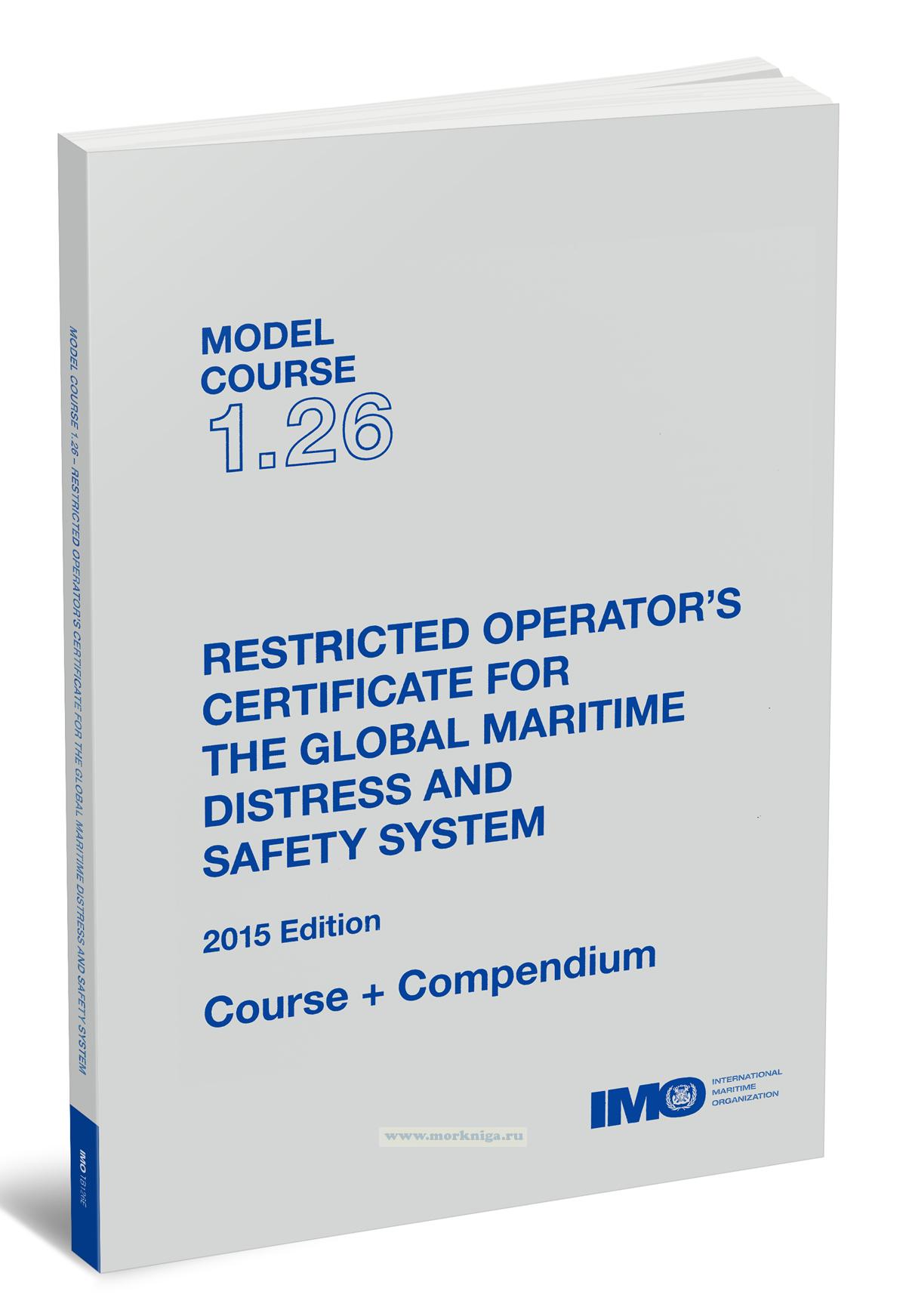Maritime english. Model course 3.17
Издания полностью на английском языке
Since its inception the International Maritime Organization (IMO) has recognized the importance of human resources to the development of the maritime industry and has given the highest priority to assisting developing countries in enhancing their maritime training capabilities through the provision or improvement of maritime training facilities at national and regional levels. IMO has also responded to the needs of developing countries for postgraduate training for senior personnel in administrations, ports, shipping companies and maritime training institutes by establishing the world Maritime University in Malmo, Sweden, in 1983.
Following the adoption of the International Convention on Standards of Training, Certification and Watchkeeping for Seafarers, 1978 (STCW), a number of IMO Member Governments had suggested that IMO should develop model training courses to assist in the implementation of the Convention and in achieving a more rapid transfer of information and skills regarding new developments in maritime technology. IMO training advisers and consultants also subsequently determined from their visits to training establishments in developing countries that the provision of model courses could help instructors improve the quality of their existing courses and enhance their implementation of the associated Conference and IMO Assembly resolutions.
In addition, it was appreciated that a comprehensive set of short model courses in various fields of maritime training would supplement the instruction provided by maritime academies and allow administrators and technical specialists already employed in maritime administrations, ports and shipping companies to improve their knowledge and skills in certain specialized fields. With the generous assistance of the Government of Norway, IMO developed model courses in response to these generally identified needs and now keeps them updated through a regular revision process taking into account any amendments to the requirements prescribed in IMO instruments and any technological developments in the field.
These model courses may be used by any training institution and, when the requisite financing is available, the Organization is prepared to assist developing countries in implementing any course.
2009 Edition
Contents
Foreword
Introduction
Purpose of IMO model courses
Structure of IMO model course for Maritime English
Use of IMO model course for Maritime English
Lesson plans
Presentation
Implementation
Training and the STOW Convention, 1978, as amended
Responsibilities of Administrations
Bibliography
Core section 1
Part A: Course framework
Aims
Objectives
Syllabus content
Syllabus structure
Syllabus methodology
Entry levels
Course intake limitations
Trainer’s experience
Equipment needed
Core section 1
Part B: Course outline
Core section 1
Part C: Detailed teaching syllabus
Core section 2
Part A: Course framework
Aims
Objectives
Syllabus content
Syllabus structure
Syllabus methodology
Entry levels
Course intake limitations
Trainer’s experience
Equipment needed
Core section 2
Part B: Course outline
Core section 2
Part C: Detailed teaching syllabus
Core sections 1 and 2
Part D: Instructor manual
Detailed contents
Introduction
Principles of the Communicative Approach
Learning Styles
Classroom Management
Input and lesson planning
Stages of lessons
Task Based Learning
Active Learning
Pair and group work
Using the internet
Teaching the three language systems:
Teaching grammar
Teaching vocabulary
Teaching pronunciation
Teaching the four communication skills:
Teaching listening
Teaching reading
Teaching speaking
Teaching writing
Integrating maritime topics
Appendix A: Summary of references to English language requirements from the International Convention on Standards of Training, Certification and Watchkeeping for Seafarers, 1978, as amended
Appendix B: Example of a lesson plan and notes
Appendix C: Notes on assessment
Guidance on the Implementation of Model Courses
2015 Edition
Contents
Introduction
Purpose of the model courses
Structure of IMO model course for Maritime English Use of IMO model course for Maritime English
Lesson plans
Presentation
Implementation
Training and the STCW Convention, 1978, as amended Responsibilities of Administrations
Bibliography
IMO references (R)
Textbooks (T)
Publications (P)
IMO Model Courses (M)
Teaching aids
Websites
Video/Computer Based Training (V)
Recommended reading
Core section 1: general maritime english (GME)
Part A: Course Framework;
Aims
Objectives
Syllabus content
Syllabus structure
Syllabus methodology
Entry levels
Course intake limitations
Trainer's experience
Equipment needed
Part IB: Course Outline
Elementary level
Intermediate Level
Part C: Detailed Teaching Syllabus
Core section 2: specialised maritime english (SME)
Part 2.1: Specialised Maritime English for officers in charge of a navigational
watch on ships of 500 gross tonnage or more
Part 2.1-A: Course Framework
Aims
Objectives
Syllabus content
Syllabus structure
Entry ievels
Course intake limitations
Trainer's experience
Equipment needed
Part 2.1-Bs Course Outline
Part 2.1 ~C: Detailed Teaching Syllabus
Part 2.2: Specialised Maritime English for officers in charge of an engineering
watch in a manned engine-room or designated duty engineers in a periodically unmanned engine-room
Part 2.2-A: Course Framework
Aims
Objectives
Syllabus content
Syllabus structure
Entry levels
Course intake limitations
Trainer's experience
Equipment needed
Part 2.2-B: Course Outline
Part 2.2-C: Detailed Teaching Syllabus
Part 23: Specialised Maritime English for Electro-Technical Officers (ETO)
Part 2.3-A:Course Framework
Aims
Objectives
Syllabus content
Syllabus structure
Entry levels
Course intake limitations
Trainer's experience
Equipment needed
Part 2.3-B: Course Outline
Part 2.3-C:Detailed Teaching Syllabus
Part 2.4: Specialised Maritime English for GMDSS radio operators
Part 2.4-A:Course Framework
Aims
Objectives
Syllabus content
Syllabus structure
Entry levels
Course intake limitations
Trainer's experience
Equipment needed
Part 2.4-B: Course Outline
Part 2.4-C: Detailed Teaching Syllabus
Part 2.5: Specialised Maritime English for personnel providing direct service
to passengers in passenger spaces on passenger ships
Part 2.5-A:Course Framework
Aims
Objectives
Syllabus content
Syllabus structure
Entry levels
Course intake limitations
Trainer's experience
Equipment needed
Part 2.5-B: Course Outline
Part 2.5-C: Detailed Teaching Syllabus


 Officer in charge of a navigational watch. Model course 7.03
Officer in charge of a navigational watch. Model course 7.03  Operational use of electronic chart display and information systems (ECDIS). Model course 1.27
Operational use of electronic chart display and information systems (ECDIS). Model course 1.27  Restricted operators certificate for the global maritime distress and safety system. Model course 1.26. 2015 Edition
Restricted operators certificate for the global maritime distress and safety system. Model course 1.26. 2015 Edition